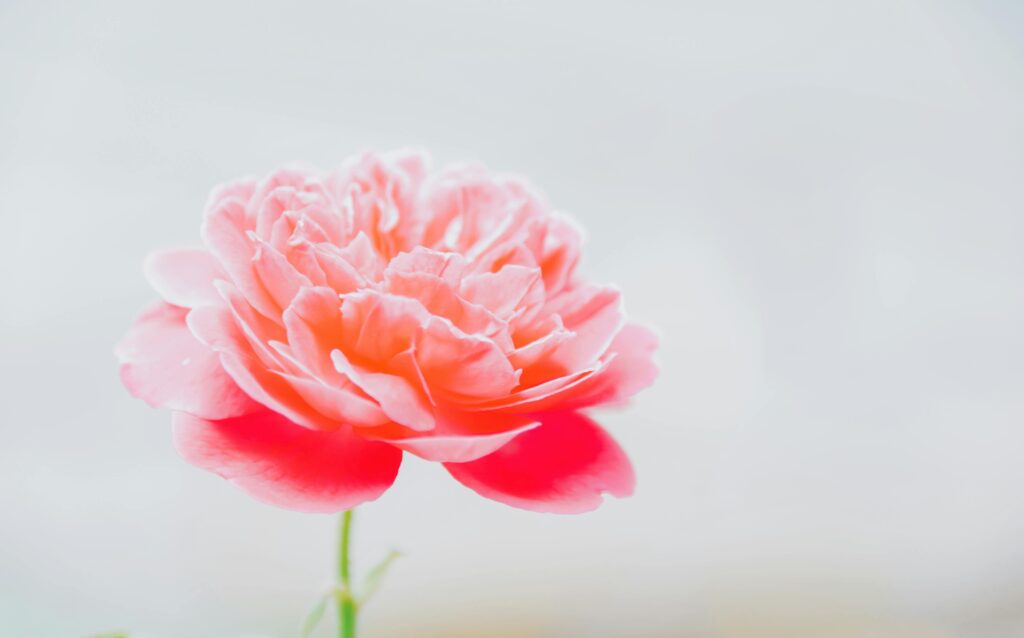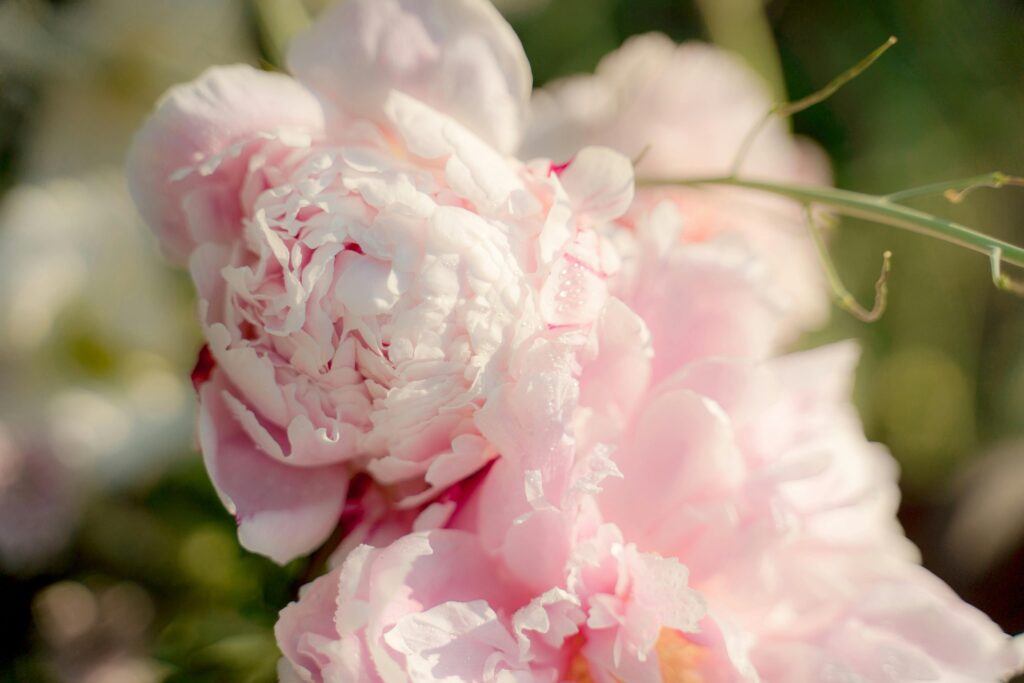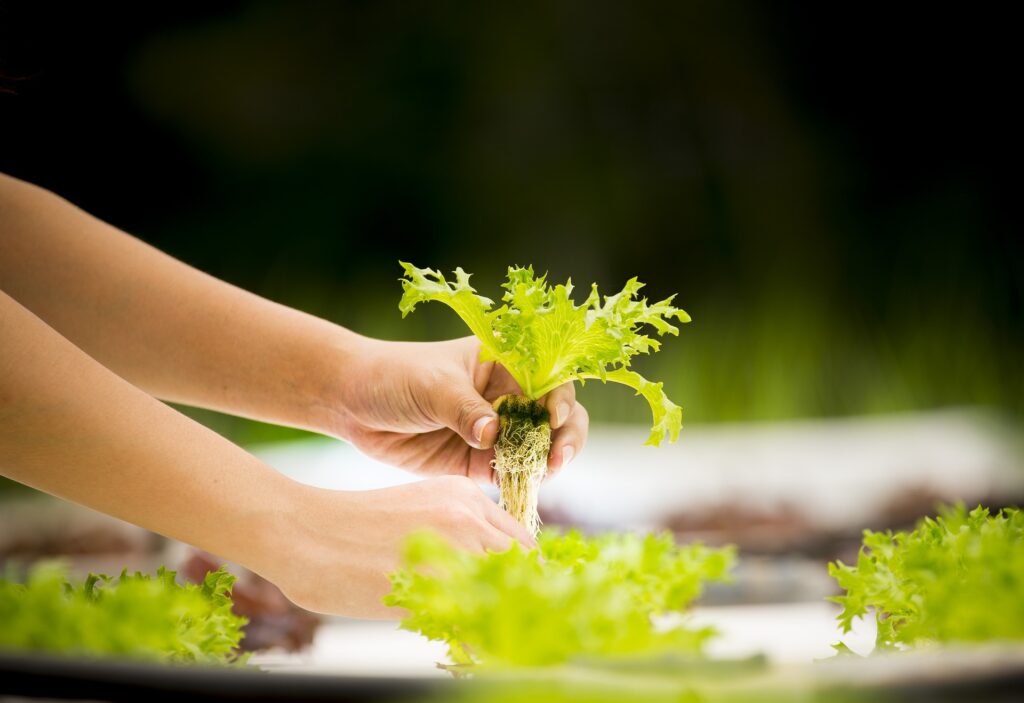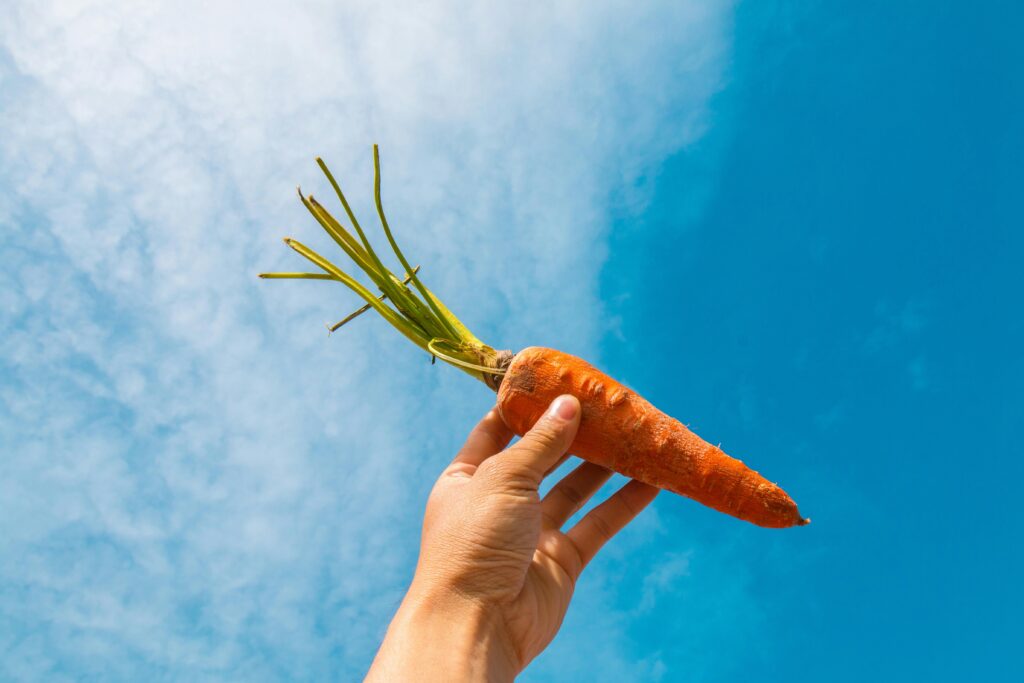Table of Contents
Growing Peonies from Seed: Introduction
Peonies, with their lush, full blooms and rich colors, capture the hearts of gardeners and floral enthusiasts alike. Originating from various parts of the world, including Asia, Europe, and Western North America, these perennials offer not just beauty but a resilience that makes them a favorite in gardens across climates. Growing peonies from seed can seem daunting, but it’s a rewarding endeavor that brings a sense of accomplishment along with spectacular blooms.
This process is marked by patience and anticipation. Unlike other plants that may sprout within a week, peonies demand time, often taking a couple of years to showcase their first blooms. However, the wait is part of the charm, offering a unique gardening experience that culminates in the emergence of vibrant flowers each spring.
This guide is designed to navigate you through each step of the process, from selecting the right seeds to the long-term care of your peonies. Whether you’re a seasoned gardener or a novice looking to try something new, the journey of growing peonies from seed is sure to enrich your gardening experience and landscape.

Understanding Peonies
Peonies are not just any flowering plant; they’re a testament to both beauty and endurance in the plant kingdom. Before diving into the cultivation process, it’s essential to understand the different types of peonies and the conditions they thrive in.
Types of Peonies
- Herbaceous Peonies: These are the most common type of peonies found in gardens. They die back to the ground each winter and re-emerge in the spring, blooming in late spring to early summer. Herbaceous peonies come in a range of colors, including pink, red, white, and yellow.
- Tree Peonies: Unlike their herbaceous cousins, tree peonies do not die back to the ground. They have a woody structure that remains year-round, with larger flowers that bloom earlier in the season. Tree peonies can offer a stunning variety of colors and forms but require a bit more care and patience to establish.
- Itoh or Intersectional Peonies: A cross between tree and herbaceous peonies, Itoh peonies combine the best traits of both. They have the large, vibrant flowers and leafy green foliage of tree peonies, with the herbaceous peonies’ ability to die back to the ground in winter.
Ideal Growing Conditions
Peonies flourish in temperate climates and require a period of winter chill to bloom. Here are the key conditions for growing healthy peonies:
- Sunlight: Peonies need full sun to partial shade, with at least six hours of sunlight a day. The right amount of light encourages strong growth and abundant blooms.
- Soil: Well-drained, fertile soil with a neutral to slightly acidic pH is ideal. Peonies are susceptible to root rot, so good drainage is crucial.
- Space: These plants need space to grow. Depending on the variety, peonies should be planted about 3 to 4 feet apart to allow for adequate air circulation and growth.
- Cold Period: A cold winter period is essential for peony dormancy and subsequent spring growth. Most varieties require at least 400-500 chill hours below 4°C (40°F) to bloom.
Understanding these basics sets the foundation for successfully growing peonies from seed. With the right knowledge and preparation, you can cultivate these magnificent blooms in your own garden.
Preparation for Planting
Growing peonies from seed requires some initial preparation to ensure the best start for these potentially lifelong garden companions. Here’s how you can set the stage for a successful planting:
Selecting Peony Seeds
- Quality: Look for seeds from reputable suppliers to ensure they are healthy and viable. High-quality seeds have a better germination rate and are more likely to produce strong, vigorous plants.
- Variety: Choose the peony variety that best suits your climate and garden space. Keep in mind the differences between herbaceous, tree, and Itoh peonies in terms of growth habits and care requirements.
Preparing the Soil
- Testing: Test your soil to determine its pH and nutrient levels. Peonies thrive in neutral to slightly acidic soil, with a pH between 6.5 and 7.0.
- Amending: Based on the soil test, you may need to amend your soil. Adding organic matter like compost can improve soil structure, drainage, and nutrient content.
- Location: Choose a planting site that receives at least six hours of sunlight daily and has good air circulation. Avoid areas where water pools after rain, as peonies do not like “wet feet.”
Choosing the Right Location
- Sunlight and Shade: A spot that gets full sun to partial shade is ideal. Some afternoon shade can be beneficial in hotter climates to prevent petal burn.
- Space: Ensure there’s enough space between plants. Peonies need room to grow and don’t compete well with other plants for nutrients and water.
- Protection: If possible, choose a location protected from strong winds to prevent damage to stems and blooms.
The Planting Process
Once your seeds and planting site are ready, it’s time to sow your peony seeds. Here’s a step-by-step guide:
- Timing: The best time to plant peony seeds is in the late summer or early fall. This allows the seeds to undergo natural stratification (cold treatment) over the winter, which is necessary for germination.
- Planting Depth and Spacing: Plant seeds about ½ inch deep in the soil. If planting multiple seeds, space them at least 2 inches apart to give each seedling enough room to develop.
- Labeling: It’s a good idea to label your planting area with the variety name and planting date, as peonies can take a few years to bloom, and you may forget what you planted where.
- Watering: After planting, water the seeds gently to settle the soil around them. Keep the soil slightly moist but not waterlogged throughout the fall and winter.
- Mulching: Apply a light layer of mulch to help maintain soil moisture and temperature. This also helps protect the seeds from being disturbed by birds or animals.
- Patience: Remember, growing peonies from seed require patience. It can take several years for the first blooms to appear, but the wait is well worth it for the beauty they bring to your garden.
With the seeds planted and the site prepared, the next step is to care for your peonies as they grow. This involves regular watering, feeding, and monitoring for pests and diseases.
You can also plant peonies and many other flowers and vegetables with water using the hydroponic method.

Caring for Your Seedlings
Once your peony seeds have sprouted and begun their journey toward becoming beautiful blooms, the focus shifts to providing the care they need to thrive. Here’s how to nurture your peony seedlings through their crucial early stages:
Watering
- Consistency is Key: Peony seedlings prefer evenly moist soil. Water them regularly to keep the soil from drying out completely, but avoid overwatering, which can lead to root rot.
- Method: Use a gentle spray to water, avoiding direct streams that can displace the soil or damage delicate seedlings.
Feeding
- Fertilizing: While peony seedlings generally require little fertilization in their first year, a light application of a balanced, slow-release fertilizer in the spring can promote healthy growth. Avoid high-nitrogen fertilizers, which can encourage foliage at the expense of blooms.
- Composting: Adding compost around the base of the seedlings can provide nutrients and improve soil structure, aiding in plant growth and health.
Sunlight Requirements
- Adequate Light: Ensure your peony seedlings receive enough sunlight, ideally 6 to 8 hours a day. This promotes strong, healthy development and is critical for future flowering.
- Protection: In regions with very harsh sunlight, some afternoon shade can help prevent scorching of the leaves.
Dealing with Pests and Diseases
- Monitoring: Keep an eye out for common peony pests like aphids and diseases such as botrytis (peony wilt). Early detection is key to managing these issues.
- Prevention and Treatment: Use natural or recommended treatments for any pests or diseases. For example, neem oil can be effective against aphids, and removing affected foliage can help control botrytis.
- Good Practices: Maintain good garden hygiene by removing debris and spent blooms to minimize disease risk.
As your peony seedlings grow, they’ll gradually become more robust and less susceptible to environmental stresses. However, it’s crucial to continue providing them with the care they need to ensure they develop into strong, blooming plants.
Transplanting Peonies
As your peony plants mature, you may find the need to transplant them to a more suitable location where they can continue to grow and eventually bloom. Here’s how to safely transplant peony seedlings:
- Timing: The best time to transplant peonies is in the fall, when the plants have gone dormant.
- Preparation: Before transplanting, prepare the new planting site by ensuring it has well-drained soil, is in a sunny location, and is enriched with compost.
- Digging Up: Carefully dig around the peony plant, aiming to keep as much of the root ball intact as possible.
- Transplanting: Plant the peony at the same depth it was growing previously, as planting too deep can prevent blooming. Water thoroughly after transplanting.
Transplanting can provide your peonies with the optimal conditions they need for successful growth and blooming. It’s a step that, while not always necessary, can significantly benefit the long-term health and beauty of your peonies.
Long-Term Care and Maintenance
After the initial planting and care phases, peonies settle into a routine that requires less intensive care but focuses on ensuring their health and vigor over the years. Here are the key aspects of long-term care and maintenance for your peonies:
Pruning
- Deadheading: Remove spent blooms shortly after they fade. This prevents the plant from expending energy on seed production and can sometimes encourage a second flush of flowers in certain varieties.
- Fall Cleanup: Cut back herbaceous peonies to the ground in late fall to prevent overwintering diseases. For tree peonies, only remove dead wood and shape the plant if necessary.
Winter Care
- Mulching: Apply a protective layer of mulch around the base of your peonies in the fall. This helps insulate the roots from extreme cold and conserves moisture. Be sure to pull back the mulch in the spring to allow new shoots to emerge easily.
- Protection: In areas with harsh winters, consider providing additional protection for tree peonies, such as wrapping or using a burlap shield.
Dividing Peonies
- When to Divide: Herbaceous peonies rarely need division and can thrive in the same spot for decades. However, if you wish to propagate your plants or rejuvenate an older, less productive clump, the best time to divide is in the fall.
- How to Divide: Carefully dig up the plant, making sure to keep a good amount of roots attached to each division. Each section should have 3-5 eyes (buds). Replant immediately at the same depth they were growing before.
Ensuring Blooming Year After Year
- Adequate Sunlight: Ensure your peonies receive enough sunlight as they mature. Shaded conditions can lead to fewer or no blooms.
- Fertilization: In spring, apply a low-nitrogen fertilizer or compost around the base of the plants. Avoid over-fertilizing, which can harm the plants and reduce flowering.
- Soil Care: Maintain soil health by incorporating organic matter and ensuring good drainage. Healthy soil supports robust peony plants.
Peonies are remarkably long-lived plants, with some specimens known to flourish for over 100 years. By providing them with the care outlined above, you’re not just cultivating flowers for your garden; you’re nurturing a legacy that can outlive generations.

Common Challenges and Solutions
Even with the best care, peonies can face challenges. Here are some common issues and how to address them:
- Lack of Blooms: This can be due to planting too deeply, insufficient sunlight, or excessive nitrogen. Review your care practices and adjust as necessary.
- Diseases and Pests: Regular monitoring and maintaining clean growing conditions can prevent most problems. If diseases or pests are detected, treat them early with recommended methods.
Peonies embody both beauty and resilience, making them a cherished addition to any garden. With patience and proper care, your effort in growing peonies from seed will reward you with spectacular blooms that herald the arrival of spring for years to come.
People are watering the orchids with ice cubes. Learn How.
Growing Peonies from Seed: Conclusion
Growing peonies from seed is a journey of patience, care, and a touch of gardening magic. While it may take a few years to see the first blooms, the lush, vibrant flowers that eventually grace your garden will be a source of immense pride and joy. Embrace the process and look forward to the years of beauty and elegance that peonies bring to any landscape.
FAQ
How long does it take for peony seeds to germinate?
Peony seeds require a period of stratification (cold treatment) before they will germinate, which can take several months. After planting in the fall, seeds may start to germinate in the following spring. However, some seeds may take a second winter of stratification to sprout. Patience is key when growing peonies from seed.
Can I grow peonies in pots?
Yes, peonies can be grown in pots, especially the herbaceous and Itoh varieties. Choose a large pot with adequate drainage holes and use a well-draining potting mix. Keep in mind that peonies grown in pots may require more frequent watering and may not live as long as those planted in the ground.
How often should I water my peony plants?
Peony plants prefer evenly moist soil, especially during the growing season. Water them once a week or more frequently during hot, dry spells, ensuring the soil is moist but not waterlogged. Once established, peonies are quite drought-tolerant and will need less frequent watering.
When can I expect my peonies to bloom after planting from seed?
Growing Peonies from seed require patience, as it can take them 3 to 5 years to bloom for the first time. The exact time will depend on the variety and growing conditions. Once they start blooming, peonies can continue to do so for decades with proper care.
How do I prepare my peonies for winter?
In colder climates, herbaceous peonies should be cut back to the ground in the fall after the foliage dies back. Apply a layer of mulch around the base to protect against extreme cold. Tree peonies and Itoh peonies should not be cut back, but they can benefit from a layer of mulch to protect their roots.






